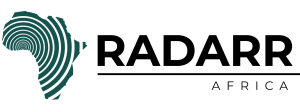106
Cameroon’s domestic public debt has now reached CFA3,814.4 billion, excluding arrears and floating debt, according to a new report released by the Autonomous Sinking Fund (CAA). This figure, which equals about 11.6% of the country’s Gross Domestic Product (GDP), highlights the increasing reliance of the Cameroonian government on domestic borrowing to manage state finances in 2025.
The debt figure does not include arrears, which are invoices left unpaid for more than three months, nor floating debt, which refers to short-term unsettled obligations. According to the CAA’s analysis, over 55% of this domestic debt is made up of public securities—mostly Treasury bills (BTA) and Treasury bonds (OTA)—that the government issues regularly on the BEAC financial market. BEAC stands for Banque des États de l’Afrique Centrale (Bank of Central African States), which serves the CEMAC region comprising Cameroon, Congo, Gabon, Chad, Equatorial Guinea, and the Central African Republic.
These public securities are handled by banks and financial institutions known as Primary Dealers (SVTs), who are in charge of buying and distributing them. Treasury bonds typically have longer maturities between two and ten years and are mainly used for infrastructure financing. On the other hand, Treasury bills mature in less than a year and are issued for short-term cash flow purposes.
The CAA noted in its June 2025 update that the volume of Treasury bills has increased by 11.6% year-on-year, which signals growing pressure on the domestic market. This raises concerns over refinancing risks, especially as costs of raising funds through Treasury bills continue to rise due to high demand and limited capacity among local banks.
Because of this, the Cameroonian government is now exploring alternative funding sources to ease the pressure on the domestic borrowing space. One of the major steps taken in this regard was the signing of a decree by President Paul Biya on May 19, 2025, which gave the Minister of Finance, Louis Paul Motazé, the authority to raise up to CFA200 billion on the international financial markets to finance operations for the rest of 2025.
This move comes at a time when the government is finding it difficult to raise enough funds domestically due to saturation of the local market, and the prudential limits that banks face in purchasing too many government securities. To tackle this issue, the Ministry of Finance is actively seeking new investors, both locally and internationally, to participate in the BEAC securities market.
One major development in this effort came in July 2025, when the government successfully raised CFA200 billion from the BEAC market through a bond issuance supported by a swap arrangement with Afreximbank (African Export-Import Bank). This innovative deal allowed Afreximbank to convert foreign currency into Central African francs (CFA), enabling the bank to invest in Cameroon’s local bond offering.
This historic deal marked the first time a foreign investor took part in the BEAC public securities market, which has been in existence for nearly 14 years. The move is seen as a major financial milestone, not just for Cameroon, but for the CEMAC region at large. It also reflects growing interest from international financial institutions in Central African debt markets.
Interestingly, this development comes ahead of a leadership change at Afreximbank. Starting from September 2025, George Elombi, a Cameroonian legal and financial expert, will take over as the new President of Afreximbank, succeeding Prof. Benedict Oramah. Elombi’s appointment is expected to further strengthen the relationship between Cameroon and the pan-African financial institution.
Analysts say that if more foreign investors like Afreximbank enter the BEAC securities market, it could significantly ease pressure on local banks, improve debt sustainability, and offer cheaper financing options for governments across the CEMAC region. However, they also warn that increasing reliance on borrowing—both locally and internationally—should be closely managed to avoid long-term debt distress.
As of now, Cameroon continues to walk a tightrope between financing its development needs and keeping public debt within sustainable limits. With rising domestic borrowing costs and a saturated local market, international partnerships may become even more important in the country’s fiscal strategy going forward.

